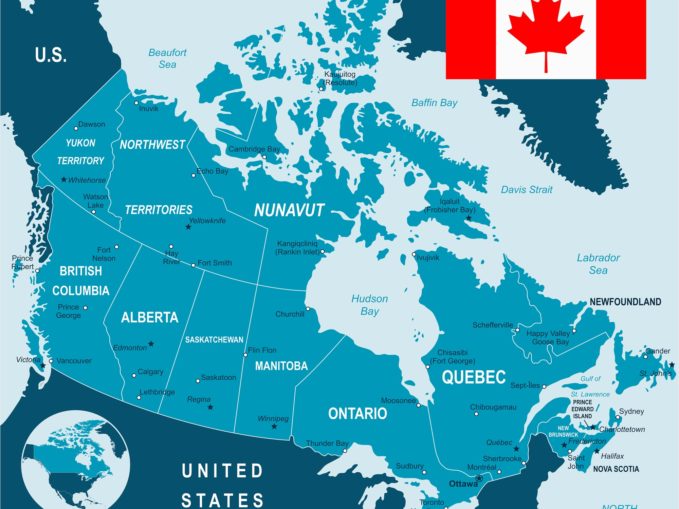
What drivers and carriers need to know to satisfy requirements on both sides of the border
By Scott Sutarik, Vice President of Commercial Vehicle Solutions, Geotab
The global pandemic disrupted nearly every industry, including trucking — the sector that helped ensure essentials such as food, medicines and protective gear were delivered despite mandatory lockdowns. In the early months, when little was known about the virus, drivers made great personal sacrifices. But taking risks is nothing new, especially to the most experienced of drivers. Historically, truck driving has been listed among the most dangerous occupations in the U.S. and Canada. Year after year, statistics show the necessity to improve driver safety to help reduce serious injuries and fatalities from crashes, with data as the key to understanding leading causes and finding solutions.
While time-consuming processes of recording a driver’s duty status and vehicle performance have been simplified and streamlined through Automatic On-Board Recording Devices (AOBRDs), more insight is needed to achieve safety goals—particularly when so much is at stake. Roughly two-thirds of mutual trade between Canada and the U.S. is dependent on trucking. In America, the $791 billion industry transports 72.5% of all freight and supplies 6% of the nation’s full-time jobs. In Canada, trucks transport approximately 90% of all freight, with the industry valued at $65 billion overall. Among the world’s three largest countries by land area, these neighboring countries each have extensive road systems that stretch their breadth and width, requiring truck drivers to travel hundreds of billions of miles annually.
To help bring the industry to new levels of safety, the Federal Motor Carrier Safety Administration (FMCSA) in conjunction with the U.S. Department of Transportation (DoT) proposed an Electronic Logging Device (ELD) mandate, which was approved with an implementation deadline set for December 18, 2017. For vehicles already equipped with AOBRDs, a grandfather clause was included to grant an extension to December 16, 2019. Following in 2019, Transport Canada published its ELD mandate, which gave federally regulated commercial trucks and buses until June 12, 2021 to comply. On March 2, 2021, however, Transport Minister Omar Alghabra issued a statement noting that, considering COVID-19’s impact on trucking, the ELD mandate will implement a progressive enforcement period beginning June 12, with education and awareness part of the rollout.
This comes as good news to many, as it buys them more time to comply. About half, or 150,000, commercial vehicles already have an ELD, but that number is expected to increase 25% over the next 10 years. While each ELD must be certified in both the U.S. and Canada for trucks crossing borders, it’s important to note that ELDs certified in the U.S. are not fast-tracked for Canadian certification because the two ELD mandates differ in many ways. With that said, motor carriers should be aware of the following differences in the mandates so that drivers and operators are prepared when the Canadian mandate takes full effect.
Certification
- Canada: Requires a third-party certification process to validate that the ELD complies with the technical specifications, with ELD providers required to pay for the testing and certification of their solution.
- U.S.: Allows self-certification, which means motor carriers can conduct their own due diligence in choosing among almost 500 ELDs listed by the FMCSA.
Summary of driver hours
- Canada: Requires ELDs to indicate to the driver the number of driving hours or minutes remaining before the next break.
- U.S.: No requirements.
Exemptions
- Canada: Offers some exemptions such as rental trucks if used for 30 days or less, vehicles operated by a motor carrier under a permit or a motor carrier to which an exemption has been issued under the Act, and vehicles manufactured before model year 2000.
- US.: Exempts rental trucks if used for eight days or less. Exemptions are allowed for drivers of vehicles manufactured before the year 2000 and those transporting empty vehicles intended for sale, lease or repair, as long as the vehicle they are driving is part of the shipment.
Logs and reports during malfunction
- Canada: Allows drivers to record daily logs on paper up to 14 days or until they return to the home terminal from the current trip in the event of an ELD malfunction. At that time, the device must be repaired or replaced to ensure full functionality.
- U.S.: Allows the recording of a driver’s hours of service (HOS) on a paper log for a maximum of eight days in the event of an ELD malfunction.
Personal conveyance restrictions
- Canada: Requires suppliers to measure 75 km of personal conveyance within 24 hours.
- U.S.: No requirements.
Acquiring location data
- Canada: The government must supply Geographic Names Information System (GNIS) files to ELD providers for distance and direction.
- U.S.: ELD providers must enable devices to use GNIS files to obtain locations on yard moves, personal conveyance, duty status and unassigned vehicle moves.
ELD features required in both countries
- Canada and U.S.: Require ELDs to automatically detect and create drive status at speeds of 5 mph (8 km/h) or below, and automate to on-duty status after five minutes of being stopped.
- Canada and U.S.: Require functions that automatically detect malfunctions and diagnostics when issues arise.
- Canada and U.S.: ELDs must show unassigned driving times that the driver is required to accept or reject, with driving status unable to be modified under any circumstances.
More than 5 million commercial trucks travel between Canada and the U.S. each year. With more time left to prepare, motor carriers should look for an ELD provider that can support all the elements of both mandates, including those unique to Canada, and consider “future-proof” features, as changes to mandates are likely as the industry evolves. Additionally, choose an ELD that can seamlessly switch from displaying one country’s details to the other as the vehicle crosses the border, and one that enables customization capabilities. For instance, being able to identify zones around a fleet’s home base where fueling, maintenance and loading may take place independent of the actual driver will help distinguish unassigned from assigned logs. While Geotab is currently working with a certification partner and is committed to meeting the deadline and supporting fleets through the process, it’s important to note that given the cost and time required for certification, not all ELD providers will apply, making it critical for fleets to speak with their current providers to understand if their solutions will be compliant with the new regulations. For those needing more guidance or answers regarding the rules and how they may impact drivers and operators, visit Transport Canada or contact an ELD provider to ensure not only compliance but a solution that will offer a competitive advantage on both sides of the border.
 Scott Sutarik, Vice President of Commercial Vehicle Solutions, Geotab
Scott Sutarik, Vice President of Commercial Vehicle Solutions, Geotab
Scott Sutarik, VP, Commercial Vehicle Solutions for Geotab, drives sales and market development for the truck, off-road, and asset markets worldwide. He has extensive experience within the truck manufacturing industry, specializing in medium duty and heavy duty trucks. He previously worked in sales and marketing at Navistar Inc. where he supported over 700 dealerships, worked with suppliers and telematics providers, and managed the OnCommand Connection Program. With his expertise in telematics, regulatory compliance, engine diagnostics, and alternative fueled vehicles, Scott provides training and works with Geotab’s partners to develop leading-edge fleet management solutions for the trucking industry.



